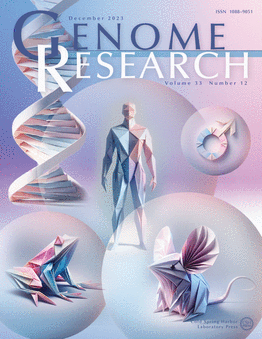九头蛇具有类似哺乳动物的突变率,促进快速适应,尽管它的表型不老化
IF 6.2
2区 生物学
Q1 BIOCHEMISTRY & MOLECULAR BIOLOGY
引用次数: 0
摘要
越来越多的证据表明,体细胞突变可能是衰老过程的主要原因。然而,该理论的预测是否也适用于比人类寿命长的物种,还有待检验。九头蛇是一种淡水珊瑚虫属,在实验室条件下具有显著的再生能力和潜在的无限寿命。通过对单细胞和整个动物的基因组测序,我们发现九头蛇干细胞的突变率甚至略高于人类或小鼠。对这种偏离理论预测的潜在解释可能在于更高的突变率所提供的适应性,因为我们能够证明,广泛研究的水螅magnipapillata菌株105的基因组自50年前培养以来经历了一个强烈的正选择过程。这很可能代表了对急剧变化的环境条件的快速适应,这些环境条件与从野外到实验室条件的转变有关。圈养动物的正选择过程包括与水螅的简单神经系统、核酸代谢过程、细胞迁移和水解酶活性相关的途径。本文章由计算机程序翻译,如有差异,请以英文原文为准。
Hydra has mammal-like mutation rates facilitating fast adaptation despite its nonaging phenotype
Growing evidence suggests that somatic mutations may be a major cause of the aging process. However, it remains to be tested whether the predictions of the theory also apply to species with longer life spans than humans. Hydra is a genus of freshwater polyps with remarkable regeneration abilities and a potentially unlimited life span under laboratory conditions. By genome sequencing of single cells and whole animals, we found that the mutation rates in Hydra’s stem cells are even slightly higher than in humans or mice. A potential explanation for this deviation from the prediction of the theory may lie in the adaptability offered by a higher mutation rate, as we were able to show that the genome of the widely studied Hydra magnipapillata strain 105 has undergone a process of strong positive selection since the strain's cultivation 50 years ago. This most likely represents a rapid adaptation to the drastically altered environmental conditions associated with the transition from the wild to laboratory conditions. Processes under positive selection in captive animals include pathways associated with Hydra’s simple nervous system, its nucleic acid metabolic process, cell migration, and hydrolase activity.
求助全文
通过发布文献求助,成功后即可免费获取论文全文。
去求助
来源期刊

Genome research
生物-生化与分子生物学
CiteScore
12.40
自引率
1.40%
发文量
140
审稿时长
6 months
期刊介绍:
Launched in 1995, Genome Research is an international, continuously published, peer-reviewed journal that focuses on research that provides novel insights into the genome biology of all organisms, including advances in genomic medicine.
Among the topics considered by the journal are genome structure and function, comparative genomics, molecular evolution, genome-scale quantitative and population genetics, proteomics, epigenomics, and systems biology. The journal also features exciting gene discoveries and reports of cutting-edge computational biology and high-throughput methodologies.
New data in these areas are published as research papers, or methods and resource reports that provide novel information on technologies or tools that will be of interest to a broad readership. Complete data sets are presented electronically on the journal''s web site where appropriate. The journal also provides Reviews, Perspectives, and Insight/Outlook articles, which present commentary on the latest advances published both here and elsewhere, placing such progress in its broader biological context.
 求助内容:
求助内容: 应助结果提醒方式:
应助结果提醒方式:


